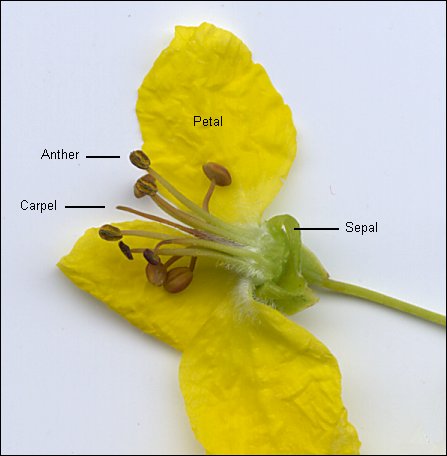
As things go in the history of our planet, flowers are a relatively new invention, dating back probably less than a couple hundred million years. Yet, the flowering plants have become so successful that they comprise the majority of kinds of plants.
A basic flower consists of four whorls of structures: going from the outside toward the center, an outer ring of green, leaf-like sepals; then a circle of often colorful petals; a row of pollen-producing anthers; and, in the center, carpels, the female parts of the flower. From this basic flower plan, an almost limitless variety of forms have evolved, often adapted to serve the needs of their pollinators such as insects—pollinators that, in turn, fulfill the need of the plant for fertilization.
Gardeners recognize these adaptations in speaking of butterfly plants,
bee plants, and hummingbird plants. Keep an eye on our Chihuahuan Desert native plants
and watch who comes to them. You'll see the red salvias attracting hummingbirds;
Woolly Butterfly Bush, butterflies; and, of course, those of you fond of honey,
mesquite for the bees.
![]()
Contributor: Arthur H. Harris, Laboratory for Environmental Biology, Centennial Museum, University of Texas at El Paso.
Desert Diary is a joint production of the Centennial Museum and KTEP National Public Radio at the University of Texas at El Paso.

Section of a Parkinsonia flower showing the basic four parts. One side of the flower has been removed to reveal the inner parts. In this flower, the carpels have been reduced to one, but the sepals, petals, and anthers are multiple.